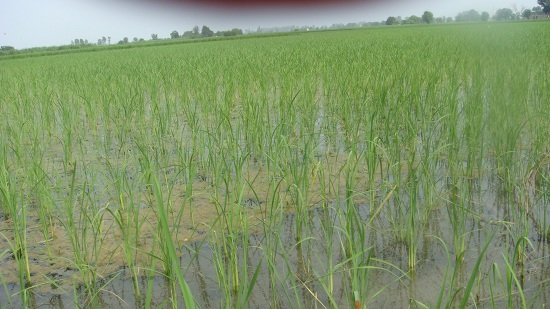Wednesday, 3 December 2025

In his insightful article, Dr. Sumanth Holla, Assistant General Manager, Seeds Research, KisanKraft explores how Dry Direct Seeded Rice (Dry DSR) is emerging as a game-changer for India’s water-stressed paddy farmers. Through the story of Baldev Singh from Punjab, he illustrates how this method—where seeds are sown directly into dry, well-prepared soil—can cut water use by up to 50 per cent, lower labour costs, and reduce methane emissions, all while maintaining comparable yields. Dr. Holla explains that as groundwater depletion and labour shortages worsen across Punjab, Haryana, and Uttar Pradesh, DSR offers a climate-smart, cost-efficient, and sustainable alternative to traditional transplanting. However, he notes that adoption remains slow due to challenges such as weed management, lack of farmer training, and limited access to suitable seed varieties and machinery. Dr. Holla calls for a supportive ecosystem—including targeted policy incentives, farmer-led pilots, and ongoing varietal research—to scale the practice. He concludes that for India to secure its food and water future, Dry DSR must evolve from a niche innovation into a mainstream cultivation strategy enabling farmers to “grow more with less.”
In the heart of Punjab, a farmer named Baldev Singh faced a challenge that thousands of his peers experience every year. The monsoon was delayed, water availability in his village pond was limited, and electricity for pumping groundwater was rationed. Traditionally, he would wait for the rains to puddle his field before transplanting paddy saplings. But this year, Baldev adopted something new, Dry Direct Seeded Rice (DDSR).
Instead of preparing a flooded nursery and transplanting, he sowed directly into the dry, well-prepared soil using a seed drill. Within days, seedlings emerged evenly across the field. He had saved nearly 30 per cent of the water he usually used, spent less on labour, and finished sowing his 4-acre field almost two weeks earlier than his neighbours.
Baldev’s experience is a glimpse into what many farmers across India are beginning to discover: Dry DSR is not just an alternative, it is a necessity for the future of paddy cultivation.
Traditionally, rice transplantation has been one of the most water- and labour-intensive farming practices in India. Farmers flood their fields for weeks, consuming nearly 3,000–5,000 litres of water to produce just one kilogram of rice. With groundwater levels falling rapidly in Punjab, Haryana, and western Uttar Pradesh, this system is becoming increasingly unsustainable. Labour costs are also on the rise, as rural workers migrate to other occupations.
Dry Direct Seeded Rice (DSR) is a practical and proven alternative to traditional rice transplantation. By directly sowing seeds into dry, well-prepared soil, without the need for puddling or nursery raising, farmers can significantly reduce water usage (by 50 per cent), lower methane emissions, and cut overall cultivation costs by 15–20 per cent.
DSR also shortens the crop cycle, eases labor requirements, and allows for timely sowing of the next crop. When adopted with basic weed and nutrient care, DSR consistently delivers yields on par with, or even better than, conventional methods, making it a reliable, sustainable, and income-enhancing solution for small and marginal farmers.
The advantages of Dry Direct Seeded Rice (DSR) go far beyond water and labor savings. This method significantly reduces greenhouse gas emissions, as methane production, a byproduct of continuously flooded paddy fields, drops sharply. In regions with unpredictable monsoons, DSR offers farmers the flexibility to sow earlier and use shorter-duration rice varieties, allowing more time to prepare for the next wheat or Rabi crop.
Crucially, DSR reduces overall cultivation costs while delivering similar yields to traditional methods, resulting in higher profits for farmers. Since income is a key concern, especially for small and marginal farmers, this cost-effective, climate-smart approach directly supports their financial well-being. Over the long term, DSR also helps break the cycle of delayed sowing and stubble burning, contributing to a more sustainable agricultural future.
Yet, despite its clear advantages, Dry DSR has been slow to take root in India. Many farmers remain cautious, concerned about weeds, unsure of which seed varieties work best, and lacking the right know-how. The method demands careful land preparation and timely use of herbicides, and without adequate support, smallholders often feel the risks outweigh the rewards. Extension services, too, have not been quick enough in taking success stories to the grassroots.
For Dry DSR to truly succeed, the ecosystem around it must evolve. Farmers need easy access to seeds designed for direct seeding, along with hands-on training and demonstrations that show the practice in action. Governments and institutions should back farmer-led pilots, so that confidence spreads peer-to-peer rather than top-down. Policies must also recognise the realities of India’s small and medium landholders, making seed drills and supporting machinery affordable to own or rent. Equally critical is the need for ongoing research to develop rice varieties that can better withstand weeds and adapt to shifting climate patterns.
Dry DSR is not a one-size-fits-all solution, but it stands out as one of the most promising innovations in Indian rice cultivation. It enables farmers to achieve more with fewer resources, less water, less labour, and lower environmental costs. The experience of farmers like Baldev Singh has already demonstrated its viability on the ground. The real task now is to move from isolated successes to widespread adoption.
If India is to secure its food future while conserving groundwater, reducing emissions, and easing the pressures on rural labour, Dry DSR must evolve from a promising practice in select regions into a mainstream approach across the country. The foundation has been laid; what is needed now is the collective effort to build upon it.